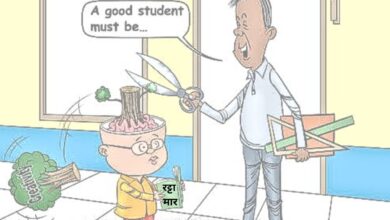India Rupee Could Hit 85 Against USD Says, Experts

India Rupee Could Hit 85 Against USD Says, Expert
Early on Tuesday, the Indian rupee crossed the psychologically critical threshold of 80 to the US dollar. It gained a little ground before closing at 79.90. The rupee has steadily depreciated against the dollar ever since the commencement of the Ukrainian conflict and the rise in crude oil prices.
Given that India with high inflation and slow development, there are rising concerns about how a weaker currency will impact the overall economy and what difficulties it will provide to policymakers.
Due to the expanding trade deficit and the expected aggressive rate hike by the US Fed later this week to control record-high inflation, economists predicted that the Indian rupee could devalue even further in the short term, reaching 85 to the dollar.
There is the general expectation that the US Fed would increase interest rates at its meeting on July 26–27 by 50–75 basis points, which might lead to capital flight from emerging nations like India. Due to the dollar’s outflow and the high price of crude oil, the rupee kept declining in value.
The rupee may reach 82 levels between July and September, according to Nomura, as a result of a number of negative factors, including the year-long Fed rate hikes and deteriorating India BoP dynamics.
This Elliot-Wave expert predicts that the rupee will fall to 85 and the Nifty will reach 14,200 after a pullback rally.

Market optimism was boosted by the recovery of the global economy, stability and moderation of the oil price (which is the biggest concern for India as an oil-importing country), stability and moderation of other commodity prices, and a halt to FII selling (which has seen them convert into net buy in recent days).
The creator of India charts and an authority on Elliott Wave theory, Rohit Srivastava, talks about how to comprehend this movement over the short and medium ranges. Elliot Waves are a tool used by technical analysts to study and predict price patterns in the financial markets.
We are watching for the next commodity price peak in the current environment. Oil and energy-related stocks are beginning to roll over, can see. As a result, commodities and equities are beginning to decline simultaneously.
While we experience this short-term comeback, there may be a divergence where declining oil prices are interpreted as a positive catalyst for equity. But ultimately you will find that commodities and stocks are dropping together as demand fall as a result of rising rates and tightening liquidity.
I would expect that bond markets would have reached their bottom because, at that point, bond markets will perceive a substantial slowdown in growth as a signal for bond yields to begin falling. We shall enter the final phase of this bear market for the first time at that moment. The selloff in stocks and commodities will likely be on its final leg down or in its sharpest leg down when the bond market bottoms out.
A strong increase in buying was also seen in the auto, FMCG, capital goods, consumer durables, industrials, oil and gas, real estate, and power stocks, which greatly increased momentum. With banks coming in second with a return of roughly 9% over the previous month, these industries saw increases of 10–17%.
On June 17, 2022, the benchmark indices broke their 52-week low. Since then, they have been gradually recovering, and a higher high higher low formation shows that the market has already discounted most of the downsides. Some experts agree with the market’s current lack of concern for inflation.
Over the past month, the broader markets increased by more than 10% while the BSE Sensex and Nifty50 rose by over 7%. Investor wealth surged by 21 lakh crore in one month of wealth erosion, as the BSE market capitalization increased to Rs 256 lakh crore from Rs 234.86 lakh crore on June 17.
The market’s biggest impediment since October 21—FPI selling—is now showing a little different pattern. FPIs were purchasers on three days this month despite the fact that they are still net sellers on a daily basis. This indicates that some FPIs think certain categories are valuable " the chief investment strategist at Geojit Financial Services, VK Vijayakumar, said.
The rupee might drop to 85 and the Nifty to 14,200 following the pullback rally: Rohit Srivastava, an analyst for Elliott-Wave
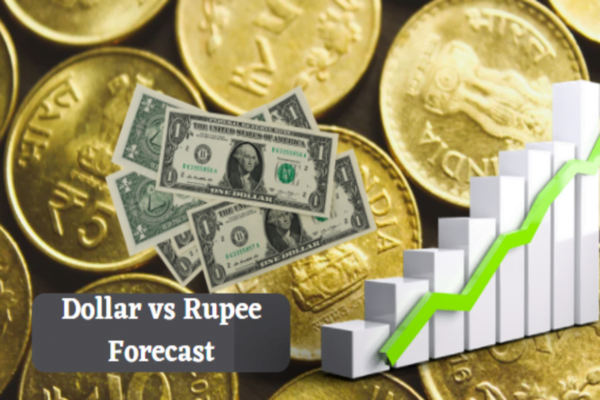
He continued by saying that the steep losses in IT equities have elevated their values. Since their fundamentals are strengthening, high-grade financials, whose values were lowered by persistent FPI selling, are recovering.
For the ninth consecutive month, FIIs kept up a net selling of shares worth more than Rs 10,000 crore, they were net buyers for three days, so the selling was less significant.
By purchasing shares in July worth more than Rs 8,200 crore, DIIs, on the other hand, have been making up for the FII outflow. Since March 2021, DIIs have been net buyers.
The price of crude oil, which has been a key cause of worry for India due to geopolitical upheaval, has been ranging between $100 and $110 per barrel without witnessing a huge jump like that observed in early June.
With inflation expected to reach 6.7 percent (up from 5.7 percent) for FY23, this price range is rather close to the $105 per barrel level that the RBI has established as its target.
Although CPI inflation in India is high, it is crucial to keep in mind that it is heading downward, falling from 7.79 percent in April to 7.04 percent in May to 7.01 percent in June. In stark contrast, inflation has been continuously increasing in the US and Europe. This tendency can continue if commodity prices remain moderate. stated Vijayakumar. According to him, stock-specific movement in response to the Q1 data is expected to occur soon.
How do you foresee the rupee trend emerging?
In the very short term, the RSI (Relative Strength Index) for the USD-INR is between 78–79. Readings exceeding 80 have resulted in a short-term modification. As a result, the USD/INR exchange rate may decrease by 50 paisas or 1 rupee if the market recovers. However, 80.7-80.8 are likely, and it might even increase all the way to 85.
What reasons, in your opinion, have prevented a fall in the rupee?
The Reserve Bank of India (RBI intervention) has prevented the rupee from falling (substantially). What other reason could there be for us to fall short of the 77 mark, which was our peak during the pandemic, besides FII withdrawals, rising oil prices, and our current account deficit?
I often wondered when the RBI would really come to an end. I had a feeling they would be interfering anymore, or maybe just a little bit, but not nearly they were before they stepped in and started raising interest rates in May. That is the first hint that they are being careful.
Second, a note about the potential risk of a $90 billion outflow was just published by them. Even if it was more of an analytical statement, it was evident that the authorities were now monitoring market dynamics and using interest rate policy to assist the currency in gaining stability. You can witness a swift shift in the USD-INR since it is responding to the market’s realities.
What People Had To Say – If Rupee would Hit 85?
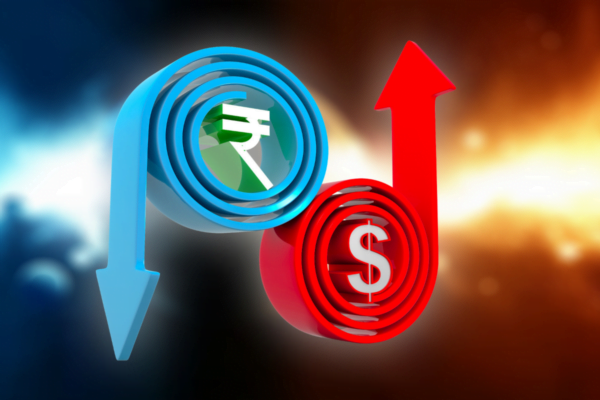
The rupee has been hitting record lows and recently dropped below 80 to the dollar for the first time ever, raising the possibility of a current account deficit.
The US Federal Reserve accelerated rate increases and the US dollar index’s rising value relative to a basket of major foreign currencies as a result of its status safe haven currency is to blame for the rupee’s decline. Analysts predict that the rupee could strengthen to 81–82 levels against the US dollar.
In contrast to other well-known currencies like the Euro, Pound, and Yen, the rupee lost less ground to the US dollar. Ashika Global Family Office Services co-founder Amit Jain asserts that “this strong growth is tied to new highs established by Indian exports and a huge inflow of domestic money into the Indian stock market.”
His company’s losses from the decline in the rupee were partially mitigated by the normalization of raw material prices and a comparable drop in the currencies of China, his main trading partner. If the rupee depreciates further to 85, It will definitely harm us and our business.
Medium-sized manufacturer of soluble and micronutrient fertilizers farm machinery, Chakradhar Chemicals, has faced many challenges so far this year. The rupee’s sharp decline and the rise in the price of imported raw materials like metals and plastic dramatically reduced its profit margins.
Kedia claims that while the impact on his firm will be minimal over the long term if the rupee continues to decline in the coming days, he has to temporarily give up on profit margins. We will be in trouble unless the dollar drops to levels of 85, he warns.
The rupee has dropped sharply in value, from 74.55 on February 23—the day before Russia invaded Ukraine—to 79.97 at the end of May. This week alone, it has already hit two times the record low of 80.0575 before rebounding thanks to intervention from the Reserve Bank of India.
While a decline of 1.5 rupees in the last two months may seem significant, Kedia notes that it is only a decrease of 2 to 3 percent in percentage terms, and while this may put pressure on his margins for a few months, he expected that things will stabilize after that.
I don’t see a cause to get all worked up over this, he added, adding that businesses continue to see fluctuations of 1 to 2 percent. There may be such a fluctuation even if I purchase my components locally rather than importing them because my freight component will rise. If the variation is 10%, the demand will be destroyed.
A combination of aggressive US Federal Reserve tightening and risk aversion led to a sharp decrease in the value of the majority of international currencies, which led to a strengthening of the dollar.
The dollar and the euro approached parity earlier this month, even dipping below for the first time in twenty years.
The four-month-old Russian invasion of Ukraine has caused capital to flee to safe-haven assets in the US, which has caused most major currencies to decline.
Due to a global shortage of goods supplied by Russia and Ukraine, the targets of harsh sanctions, significant countries’ inflation rates have risen to all-time highs, compounding the issue. Countries are qualifying to tighten the easygoing monetary policies used during the pandemic to prevent inflation due to concerns about the start of a recession, which has started a rush to buy US assets.
A drop in the value of the Indian rupee raises import expenses for the country and, through imported inflation, also raises local prices. Given that most of India’s oil is imported, rising oil prices and a declining rupee have proven to be a deadly combination for the country’s inflation situation.
As a result, the rupee’s more than 7% depreciation this year has had an effect on both importers like Kedia and Indians, who have seen a huge spike in their expenses, even on necessities.
The RBI may again intervene if needed if the rupee continues to decline.
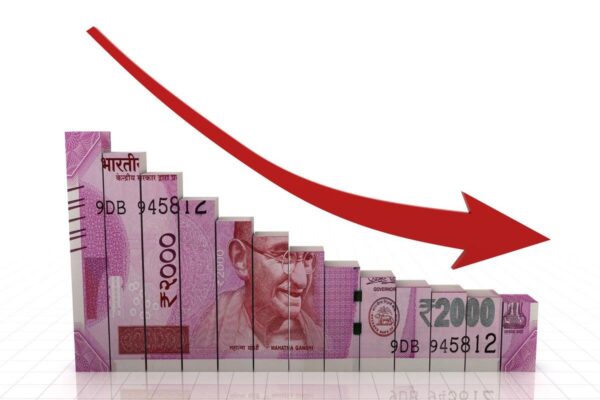
To lessen the ripple effects of its intervention policy, India’s central bank may be switching from the forward market to the spot market in an effort to protect the rupee from new record lows.
According to data from the Reserve Bank of India, the country’s foreign exchange reserves have decreased to $573 billion from $573 billion since the end of May. The rising dollar is probably to blame for some of the declines, but experts also point out that the RBI has been selling more spot US currency after past forward-based interventions disrupted the market.
The annualized one-year dollar-rupee forward premium declined during the months of April and May when the RBI increased its forward intervention. As a result, importers aggressively covered their unhedged exposures, while exporters withdrew, which increased rupee depreciation pressure.
According to Radhika Rao, senior economist at DBS Bank, “this would explain why the central bank has returned to spot reserves for intervention purposes.” The unwinding of the long forward position pushed forward premier down quickly, which was a distortion induced by the RBI’s approach.
A fall in the dollar-rupee one-year annualized forward premium to 2.86 percent in June was the result of the RBI drawing down its long forward’s book by $16 billion to $49 billion in the two months prior to May, according to RBI statistics. With signs that market activity was slowing down, it rose to 3.18 percent on Monday.
Governor Shaktikanta Das stated last week that the RBI will use its reserves to control currency volatility, allow it to line with fundamentals, and prevent jerky or bumpy swings. In the four weeks leading up to July 15, Bloomberg Economics calculated that the central bank was probably a net seller in the spot market to the tune of $12.4 billion.
According to Madhavi Arora, head economist at Emkay Global Financial Services Ltd., “While May and June saw RBI being more active on the forwards and futures front, there is a potential that the intervention mix now has a spot as a significant instrument to defend the INR.”
Given the significant devaluation of the rupee, which went from INR 38 per USD in 2007 to INR 80 per USD in 2022, India has performed poorly in terms of economic performance.
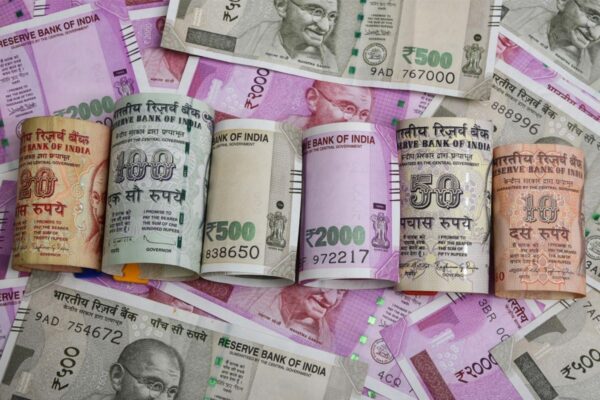
The dollar index has increased this year by 13 percent against six major currencies, including the euro, pound, yen, Swiss franc, Canadian dollar, and Swedish krona, experts also assert, so it is not just the Indian rupee that has been hurt. The RBI has been constantly watching the foreign exchange market since the Russia-Ukraine war. Additionally, it has been tapping its reserves as needed.
Concerns are being raised on a number of fronts due to the tremendous devaluation of the rupee, which last week reached INR 80.00 for a US Dollar. This depreciation is projected to have an influence on the costs of a number of important goods and services in the years to come.
The rupee’s decline from 38 to 80 vs the dollar during the past 15 years has been a reflection of the weak relative performance of the Indian economy and due to the continuous fall of the rupee, Experts had assumed that the rupee would fall to 85 very soon and will have a big impact on the Indian people and will cost their living.
edited and proofread by nikita sharma



